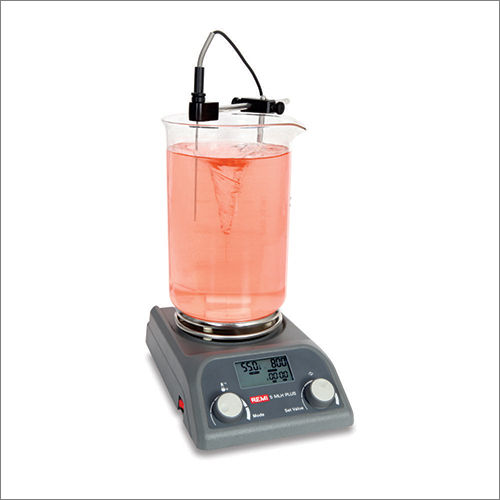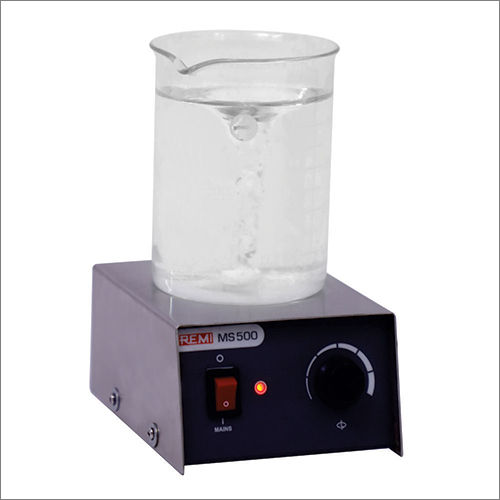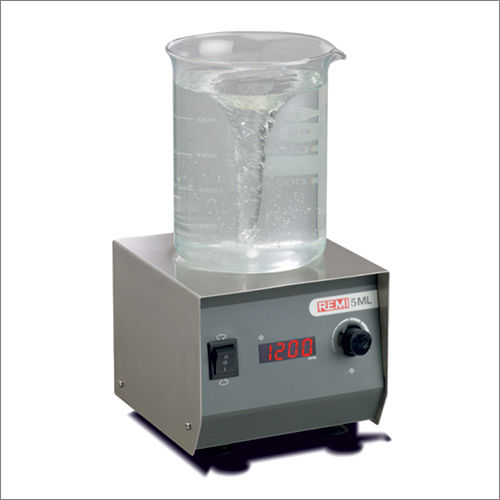Working Hours : Mon - Sat 10:00 am to 7:00 pm

5 MLH Plus Magnetic Stirrer
39000 INR/Unit
Product Details:
- Color Grey
- Features High Quality
- Usage Laboratory
- Control Type Manual
- Voltage 220 Volt (v)
- Material Plastic & Glass
- Application Laboratory
- Click to view more
X
5 MLH Plus Magnetic Stirrer Price And Quantity
- 1 Unit
- 39000 INR/Unit
5 MLH Plus Magnetic Stirrer Product Specifications
- Laboratory
- High Quality
- 5 Milliliter (mL)
- Laboratory
- 1 Years
- Manual
- Plastic & Glass
- 220 Volt (v)
- Grey
Product Description
A magnetic stirrer is a laboratory device used for mixing and stirring liquids. It consists of a small magnetic bar or bead (usually coated with a chemically inert material like PTFE) placed within a container of liquid. The container is typically a beaker, flask, or other vessel made of glass or plastic. The magnetic bar is then rotated or agitated by a magnetic field generated by a motorized magnetic stir plate placed beneath the container.
The main components of a magnetic stirrer setup include:
1. Stir Plate: The base unit that contains a motor and a magnetic coil. The motor generates a rotating magnetic field, and the coil is used to control the speed and direction of the magnetic field.
2. Magnetic Bar or Stir Bar: A small, cylindrical or octagonal bar usually coated with a chemically resistant material. This bar is placed in the liquid to be stirred and is rotated by the magnetic field generated by the stir plate.
3. Container: The vessel holding the liquid. It is commonly made of glass or plastic and can be a beaker, flask, or any other suitable container.
4. Controls: The magnetic stirrer typically has controls for adjusting the speed of rotation and sometimes the direction of the magnetic field.
Magnetic stirrers are widely used in laboratories for various applications, including:
1. Homogeneous Mixing: Ensuring uniform mixing of liquids.
2. Chemical Reactions: Facilitating reactions by maintaining a consistent stirring speed.
3. Temperature Control: Many magnetic stirrers come with a heating element to control the temperature of the liquid being stirred.
4. Dissolving Solids: Assisting in the dissolution of solids in liquids.
5. Culturing Microorganisms: Creating a well-mixed environment for microbiological cultures.
These devices offer advantages such as ease of use, precise control over stirring speed, and the ability to maintain a constant and even distribution of temperature throughout the liquid. They are commonly found in chemistry, biology, and other scientific laboratories.
Tell us about your requirement

Price:
Quantity
Select Unit
- 50
- 100
- 200
- 250
- 500
- 1000+
Additional detail
+91
Email
 English
English Spanish
Spanish French
French German
German Italian
Italian Chinese (Simplified)
Chinese (Simplified) Japanese
Japanese Korean
Korean Arabic
Arabic Portuguese
Portuguese









